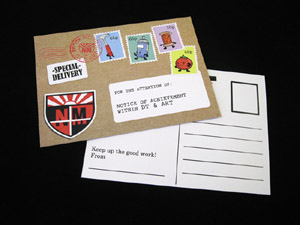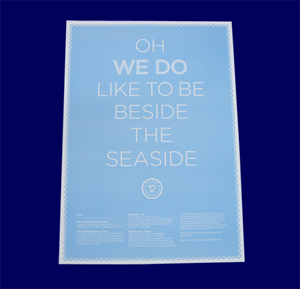



 We all know how simple and effective it can be to design and print postcards to promote a company, offer or service; postcards can either be positioned within a shop or premises, or distributed by hand or post, to gain maximum exposure.
We all know how simple and effective it can be to design and print postcards to promote a company, offer or service; postcards can either be positioned within a shop or premises, or distributed by hand or post, to gain maximum exposure.
At A Local Printer we print postcards for many different business types, both large and small, and for a diverse range of seasonal and annual commercial activities, such as Valentine’s Day.
 As poster printers we know that a poster is a simple and affordable way to communicate and get your point across effectively.
As poster printers we know that a poster is a simple and affordable way to communicate and get your point across effectively.
However, it’s essential that your poster artwork has the desired effect – as professional poster printers, we know a thing or two about maximising visual impact. Sticking to the key principles of design – making artwork that is appealing and effective – will ensure that your poster gains maximum attention for all the right reasons.
 Retro styles are definitely back in fashion, from interiors and clothes to poster and postcard printing. Just a quick browse of Pinterest will demonstrate that vintage colours, patterns and quirky text are back! When promoting an event or a business, using a postcard to hand out to potential customers can be a great way to get your product into their hands, in a convenient and eye-catching format.
Retro styles are definitely back in fashion, from interiors and clothes to poster and postcard printing. Just a quick browse of Pinterest will demonstrate that vintage colours, patterns and quirky text are back! When promoting an event or a business, using a postcard to hand out to potential customers can be a great way to get your product into their hands, in a convenient and eye-catching format.

When creating a print poster, or a leaflet, brochure or flyer for your business, it’s important to get every aspect of the design right in order to draw people’s interest. But while features such as images and colour are key for print posters and other marketing materials, it’s also important not to overlook the typography used in the design. Typography combines elements of the overall branding of any piece of promotional material, be it a poster, flyer, blog post or a letter, as it evokes a certain feeling for the reader and it can engage and retain interest.

In 1921 the phrase “a picture paints a thousand words” was coined by Frederick Barnard describing the effectiveness of using graphics in advertising. And he wasn’t wrong. Designing for the web has the benefit of plenty of white space for including all of your graphics and allows for varied ways to promote your message or products. Designing for print however does not have that luxury. Often there is limited opportunity for graphics and it falls to the words, the typography, to make an impact on your audience.
In print design typography is a crucial element. Typography essentially involves the application of organising, arranging and adapting type. In print, typography doesn’t have to be dull and lifeless. It has the opportunity to be stunning, imaginative, inspired and colourful. There are plenty of ways to enliven your printed piece through typography; innovative and original layouts, colour variations, inspired use of fonts plus more besides.